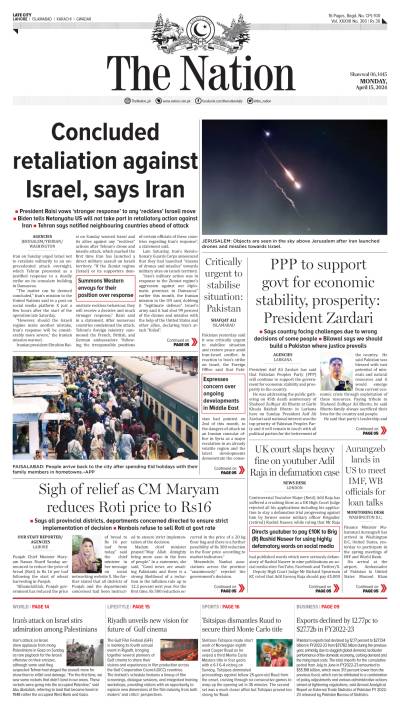Islamabad - The Annual Planning Coordination Committee has proposed national developmental outlay of Rs 1.413 trillion for the fiscal year 2020-21, it was reliably learnt.
The Annual Planning Coordination Committee (APCC) meeting on Thursday recommended, for the approval of National Economic Council (NEC), a national developmental outlay of Rs 1.413 trillion for the fiscal 2020-21 which included the federal development outlay (PSDP) of Rs 536.111 billion, block allocations of Rs 94 billion and provincial development outlay(ADP) of Rs 783 billion, official sources told The Nation. A consultative meeting of Annual Plan Coordination Committee (APCC) was held in the Planning Commission with Deputy Chairman Planning Commission Jahanzeb Khan in chair.The GDP growth for 2020-21 is targeted at 2.3 percent with contributions from agriculture (2.9 percent), industry (0.1 percent) and services (2.8 percent).
Agriculture sector is targeted to grow by 2.9 percent on the basis of expected contributions of important crops (2.2 percent), other crops (2.1 percent), cotton ginned (1.3 percent), livestock (3.5 percent), fisheries (2.1 percent) and forestry (1.5 percent)
Industrial sector is targeted to grow by 0.1 percent during 2020-21. Manufacturing sector is targeted to contract by 0.7 percent based upon LSM contraction of 2.5 percent, and small scale & household manufacturing sector growth of 6.0 percent. Moreover, construction and electricity generation & gas distribution are targeted to grow by 1.4 percent and 3.5 percent, respectively. Mining and Quarrying sector is projected to grow by 0.5 percent.
Average inflation during 2020-21 is projected at 6.5 percent on the basis of subdued demand and suppressed commodity prices in the international markets and second round effect of Covid-19 related economic implications. However, exports and remittances are likely to face challenging global environment. Trade deficit is projected at 7.1 percent of GDP. Current account deficit is projected to be at 1.6 percent of GDP in 2020-21with projected growth of exports and imports of 1.5 percent and 1.1 percent respectively
Service Sector is targeted to grow by 2.8 percent in 2020-21, supported by growth of 1.4 percent in wholesale & retail trade, 1.5 percent in transport, storage & communication, 3.4 percent in finance & insurance, 4.0 percent in housing, 4.6 percent in general government services and 4.2 percent in other private services.
In the PSDP 2020-21, out of total proposed outlay of the PSDP 2020-21 is Rs 630 billion, 59% proposed allocation has been provided to infrastructure, 35% to social sector, and the remaining 6% to other sectors. For the next year, preference has been given to social sector by proposing an allocation 35% (Rs. 185 billion) of PSDP compared to the last year allocation of 16%. The Government has taken this step to improve the life of the common man by providing good health, education, clean environment, clean drinking water and improving overall life standards of the masses. The Transport & Communications sector has been proposed Rs. 159 billion, Energy, Rs. 70 billion, Water Rs. 64 billion, Health & Population Rs. 18 billion, Education including HEC Rs. 34 billion, Physical Planning & Housing Rs. 19 billion, SDGs Rs.41 billion, Special areas (AJ&K , GB) Rs.40 billion, and merged district of KP Rs. 40 billion. Under the special program for improving the quality of life of common people Rs. 100 billion have been proposed.
APCC was told that before COVID exchange rate stability, barring tax revenues overall fiscal performance was satisfactory, reserves were build-up, current account deficit was reduced massively, inflation after peaking in January started deceleration, remittances were improving and IMF targets for 3 quarters were fully met.
It was informed that economic growth for the current fiscal was set to rise over 3 percent but came down to negative 0.4% as industrial and services sector were badly affected. Pressure on government spending mounted, exports contracted in April 2020 but imports fell much more quickly.





